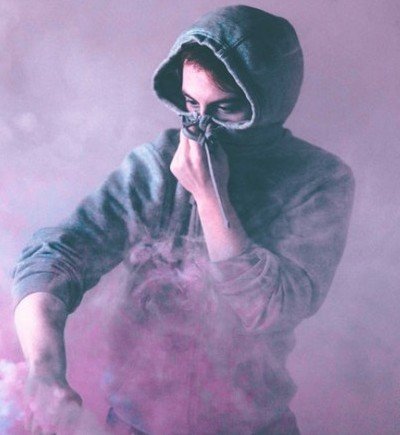
Your house may be the most toxic source of exposure. For example did you know that when you close your window both in the summer and winter, you allow toxic particles to build up. According to the Environmental Protection Agency (EPA), indoor air pollution is 2-5 times worse than outdoor air pollution. This sets the stage to both asthma and allergies which are on the rise.
We cannot fix outdoor air pollution but we certainly can certainly detox our home. The following are simple tips you can use to start transforming your home into a safer and greener place to live in.
Tips for clean safe water
Make sure you have clean water supply. This includes both water that you are drinking and bathing. Water is the most important tool for detoxifying your body. You may have to include a whole house filter if you are on a municipal water supply.
By doing so you will reduce your exposure to chlorine and fluoride not to mention hidden chemicals and pharmaceutical drugs that find their way in.
Tips for a clean safe air
Keep your air clean by opening all windows as often as possible. Try using green plants as natural detoxifiers, and try using essential oils.
Use fragrant dry herbs such as sage and rosemary. Natural candles infused essential oils may be a good choice as well. Bring fresh flowers home. And finally to remove unwanted odors you can use good old baking soda.
Tips for cleaning products
Chemical fumes emitted by certain cleaning products can cause a variety of health problems including nose, eye and throat irritation. These volatile organic compounds (VOCs) can even lead to a more severe lung disease. Switching to a greener house hold cleaning products would reduce your exposure dramatically. Try using vinegar instead of bleach. Use products such as baking soda in your bathroom as a scrub and even hydrogen peroxide as a stain remover. Essential oils can be easily incorporated as additions to natural household cleaners including laundry detergents. Use tea tree and lemon or orange. If you prefer, use a green brand such as Seventh Generation. For floors look into a steam-only floor cleaner. Try not to use dryer sheets as these may be carcinogenic. Drying your cloths outside if weather permits may be a wiser and greener choice.
Skin care tips
Products such as deodorants, toothpaste, nail polish, cosmetics, hair products and perfumes can be replaced as well. These are loaded with toxins, heavy metals and other chemical carcinogens. You may want to check the environmental working group ( EWG.org ) .
Tips for a safe kitchen
Make sure your gas stove burners are properly installed. Make sure flames are not yellow tipped. Install an exhaust leading to the outdoors. Clean your exhaust fan. Get a CO detector. High levels can prove fatal but low levels can cause fatigue, headaches, dizziness, nausea, or flu like symptoms. According to the CDC an estimated 15,000 people end up in the emergency department for nonfatal CO poisoning. Avoid nonstick pots, pans, bake ware, and utensils. Teflon contains perfluorinated chemicals (PFCs). These have been linked to cancer and other developmental disorders.
Tips for keeping your bathroom and basement safe
If you are suspecting mold in an area that happens to be excessively moist chances you have it. It can trigger allergic reactions such as watery eyes, runny nose, headaches, and cough. Some strains prove to be toxic as well.
You need to control your home's humidity which needs to be between 30-50 percent. Excessive humidity will require you to buy a dehumidifier. Also ensure that you have a vented exhaust fan, or a way to keep the room dry and toxin free, such as opening a window, and using aromatherapy with essential oils, such as tea tree.
Using ingredients such as a 1/4 cup of liquid chlorine bleach with 6 cups of water for your surfaces including rubber mats. Remember to keep room ventilated. Plastic shower curtains may be washed with 3/4 cup liquid chlorine added to the load.
If your basement has cement walls may need to be cleaned with 1 cup of chlorine bleach to 1 gallon of water, or painted with a mold/mildew resistant stain.
If you own a house and have a basement have your home inspected for radon. (Visit epa.gov/radon/radontest.html).It is estimated that 1 in 15 homes contain a high level. It is a major contributor to lung cancer.
Tips for a keeping your living room and bedroom safe
Suspect a buildup of dust and dander if you are experiencing a what may be a continuous cold, or frequent respiratory issues. Make sure your air conditioner is clean and free of any dirt or accumulated moisture. You may want to clean the filter with hot soapy water, and maintain a clean drip tray.
For a central AC unit replace filter every 3-4 months. You also may want to hire a professional to inspect the system yearly or clean the system every 5 years. Inspect your humidifier and dehumidifier and clean according to manufacturers specifications. Vacuum upholstery carefully, and your throw pillows may either need to be washed, or spun in the dryer on the no-heat, air-only cycle.
If your home has been build before 1978 you may want to test for lead paint or if it was built before 1988 have the water checked and the plumbing may have contained lead. Lead is a responsible to damaging the brain and the nervous system especially in young children. Call the National Lead Information Center at 800-424-5323 to find out more.
Protecting your home environment may be one of the most important things you may want to do. If you are facing any health challenges or suspecting any toxicity, do not wait and detox your home.
Posted from my blog with SteemPress : https://godetoxgreen.com/?p=131

